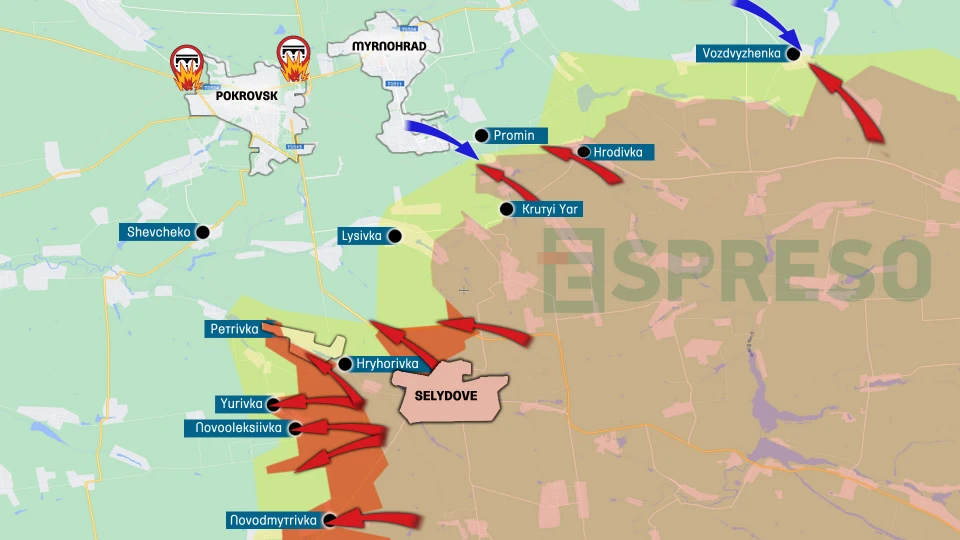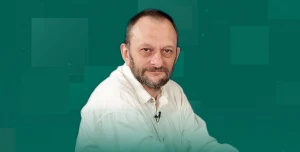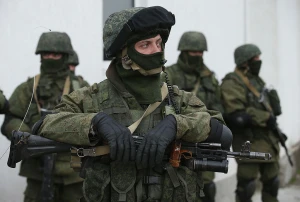
Russia aims to reach Kurakhove-Zaporizhzhia route, pressures Pokrovsk: threat to Ukraine. Serhiy Zgurets' column
This week, the Russians attempted to act actively near Kupyansk and on the Kursk front. However, the main focus was on the Pokrovsk and Kurakhove directions
Kurakhove
The Russian forces attacked Kurakhove from three directions: from the north, from the south and from the east. The north is the movement from Sontsivka to Stari Terny, as well as from the almost captured Illinka along the northern bank of the reservoir. The Russian goal from this area is to reach the Kurakhove-Zaporizhzhia highway, which is the main logistics artery for Kurakhove, to complicate the supply of the Ukrainian troops.

From the south, the Russian forces were advancing toward Dalne, which is dangerous for the Ukrainian Armed Forces, as a so-called pocket has formed between Dalne and Uspenivka. This poses certain threats to the brigades holding the line in this area. In particular, Ukrainian 79th Separate Assault Brigade and 33rd Mechanized Brigade are stationed there, along with territorial defense units.
Attacks on the city from the east also continue. Here, the Russian invaders are trying to implement tactics that have been tested in other areas. Small assault groups are trying to get into Kurakhove, gain a foothold in the basements or in any possible areas. Then other Russian units are sent to support these groups, and it is important to destroy them in time using all means of destruction, which is what the soldiers of the 46th separate airmobile brigade are doing, holding back these frontal attacks.

Now the Russians have a manpower advantage with the support of aviation and guided bombs. The Russian forces are trying to push the Ukrainian defense. Although their main efforts are now focused on covering the flanks of Kurakhove. But this does not mean that there is no pressure in other areas.
Pokrovsk
In the Pokrovsk sector, the Russian troops are not stopping their actions. Denys, an aerial reconnaissance officer with the 2nd Battalion of the 68th Separate Ranger Brigade named after Oleksa Dovbush, told how the military are holding the line there. According to him, the Russians are still trying to advance along the road from Selydove to Pokrovsk.
“We are under quite a lot of pressure. Although, undoubtedly, the enemy is now making more efforts in the Kurakhove sector to push through our defense. But in the Pokrovsk sector, the intensity of attacks has not decreased, nor has the amount of manpower used by the Russians. The use of armored vehicles has returned, although not as massive as after the Russian invaders captured Avdiivka in the spring," he said.

The assaults do not stop, the Russian troops are constantly trying to break through to the Ukrainian positions, Denys says. Intense attacks continue, sometimes with a break of only a few hours a day. The Ukrainian military is countering the Russian assaults. Aerial reconnaissance detects the advance of enemy infantry or armored vehicles in advance. The Ukrainian Armed Forces are using all firepower, including ATGMs and drones. In turn, the Russians continue to use guided bombs in the Pokrovsk sector. Although compared to April and May, there are fewer of them now.
The 3rd Special Forces Brigade's Kill House FPV School
Velo, an instructor at the Kill House FPV School, said that the main goal of creating such a school is to provide quality training for people in piloting, as well as various materials on frequencies, antennas, and how electronic warfare and electronic intelligence work.
“I believe that in the current realities, every civilian should know all this. Also, our main goal was to break this social boundary between the military and civilians. Both civilians and military come to us, and when they take a course with us, they get to know the military. With the help of these acquaintances, they even join the brigade, meaning they stop being afraid of the front,” said Velo.
According to him, the FPV topic is developing very rapidly, and if you constantly teach old material, it will not be very effective.
“We are constantly in touch with engineers, updating this information. The enemy has a lot of new developments in electronic warfare, and we get together with our engineers, with military engineers involved in this matter, and we are already figuring out how to circumvent some equipment, electronic warfare, and intelligence. We are constantly updating the program and telling our students about it. When a person passes the exam on drones, specifically on seven-inch drones, we can provide such an opportunity. In an FPV crew, there is a first pilot and a co-pilot. The co-pilot acts as a navigator, and the students gather: the first pilot acts as a pilot, and the co-pilot is already acting as a navigator. He uses the map of situational awareness to correct the pilot where he needs to go according to the given coordinates. This is exactly what we can provide to people in the basic course,” the instructor said.
- News














































